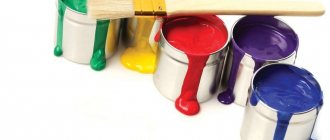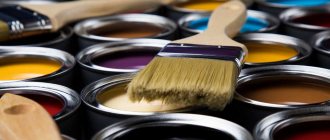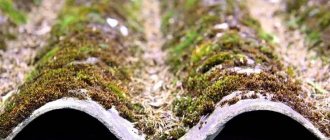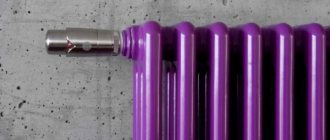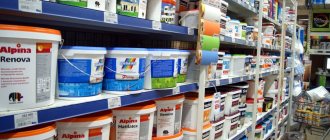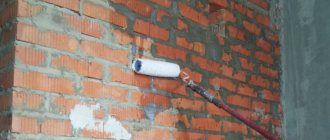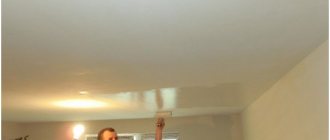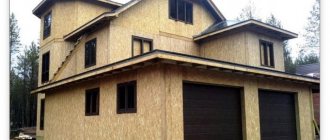The question of durable, high-quality painting of a wooden fence is relevant for many owners of both small country houses and large houses. How to paint a wooden fence? It would seem that everything is simple - I bought good paint, the necessary equipment, got ready to work and paint calmly. However, the situation is not too complicated and easy. Wood does not have excellent resistance to numerous adverse factors, which determines the need for special processing.
Why should you paint a wooden fence?
The nuance with wood is its porous microstructure, regardless of the type of wood. This property favors rapid impregnation with moisture from the outside. The structural fibers eventually become wet and the process of rotting begins. In addition, if there are rapid temperature changes, the wood fence material will become saturated with moisture and may crack as a result of water entering and expanding inside the fibers as the temperature drops.
Long-term exposure to the sun also has a negative effect on unpainted boards. For this reason, an unpainted wooden fence will slowly begin to dry out in time, and this will inevitably destroy it over time.
Insects, moss and mold pose a very serious danger to wooden fencing structures. If a wooden fence is left untreated for a long time, this will certainly affect it in the form of mold or moss, and wood being eaten away by bugs.
Considering the considerable cost of a wooden fence, it is necessary to process it in a timely manner, thereby increasing its service life and appearance.
What materials and tools are needed
How to beautifully paint a picket fence: painting ideas
Before painting the fence, it is better to prepare all the necessary tools and materials in advance so that everything is at hand. You also need to decide in advance on the composition of the necessary paints, in consultation with a specialist. After all, painting a fence is not done for six months, but you want the painted fence to not lose its color for as long as possible.
When choosing paint and varnish products, you need to pay attention to its service life - how long the paint retains its brightness. As a rule, according to the international standard, paint is good for at least 5 years.
There are 3 main groups of paints suitable for painting a wooden fence:
- Alkyd (base – drying oil, alkyd resins, oils). They are resistant to precipitation, high and low temperatures. Serve up to 4 years. Such paints should be applied only to a dry surface to avoid the formation of bubbles and peeling.
- Acrylic (you need to mix water with acrylates). Advantages - protection from moisture, durability and color brightness, frost resistance, does not crack, mixes easily.
- Oily ones. These paints take a long time to dry. Quite a budget option for painting a wooden fence.
Glazes and varnishes, as well as antiseptics (glaze and opaque) are very popular for covering a wooden fence. They not only serve to paint the fence, but also to protect it from aggressive weather conditions, fungal attack and blue stains.
For the process of painting a wooden fence, you will need brushes of various diameters (only made of natural hair), a roller, a spray gun, newspapers, rags, a container for mixing paint, and personal protective equipment.
Preparing to paint a wooden fence
How to beautifully paint a picket fence: painting ideas
Before the main painting of a wooden fence, it is necessary to carefully prepare it for this process. The service life of the painted surface of a picket fence depends on this.
The preparatory work is as follows:
- cleaning the surface with water and a soft brush from dust, dirt, moss and other contaminants;
- remove nicks, knotty outgrowths with sandpaper, drops of resin with a small spatula, and fill all recesses with putty;
- When covering a fence with old paint, you need to carefully remove it with a metal brush or heat it with a construction hairdryer, sand it off with sanding, then sand it and level it with putty.
Preparing for painting also includes preparing the paint if it requires mixing.
Creative ideas for painting a fence
How to beautifully paint a picket fence: painting ideas
You can not only paint a picket fence with plain paint, but also come up with a “creative” design for it so that it stands out against the background of its monotonous neighbors. The flight of fancy of the owners of such a fence is quite wide - from a classic elegant fence in a snow-white style to painted cartoon characters.
Whatever design you choose for a wooden fence, it is worth knowing that painting it occurs in 2 stages: priming and painting in two layers (background and final). After priming, the fence must dry for 24 hours. The first background painting is carried out in dry, windless weather, after which the surface dries for about a day.
The second final painting on the chosen theme will allow you to achieve the final look (all hard-to-reach places need to be painted over with a small brush).
Interesting ideas for painting a wooden picket fence:
- White monochromatic color is the purity of inspired classics, unusual and elegant.
- Bright variations - paint wooden planks in different colors. You can shape it into pencils.
How to beautifully paint a picket fence: painting ideas
- Drawing different flower arrangements - daisies, poppies or roses will bloom on your fence.
- Pictures of nature on a wooden fence - a forest, a field with a grazing horse, a river with weeping willows, a starry sky or a snow-covered village with smoke rising from the chimneys of village houses.
- Picket fences with painted animals, characters from fairy tales and cartoons, and funny faces are ideal for fencing children's playgrounds.
- Decoration of a fence in the ancient Slavic style with drawing thematic ornaments. If this format is complemented by an interesting carving, then your neighbors will definitely envy you.
- Colored blots-petals. They can be outlined with darker paint.
- You can paint the fence in a youth style with graffiti. This option is for brave natures.
- Marine theme. Draw a snow-white yacht on the crest of a wave with scarlet sails. As an addition to the composition, sprinkle sand with shells near the fence.
- You can create a vintage fence by specially “aging” the planks with special paints. It will look creative and unusual.
To make a wooden picket fence look beautiful and original, you can, in addition to the main painting process, add additional “tricks” to it - flowerpots with climbing plants or bright flowers, clay vessels in the Ukrainian style, framed paintings with painted portraits, funny shoes, etc. country style.
How to beautifully paint a picket fence: painting ideas
How interesting it is to paint a fence depends on the artist’s imagination and on the individual design of the owner of a country house or dacha. It is clear that if you do not master the art of drawing, then it is better to contact a specialist who will professionally and tastefully decorate your fence.
Coatings that protect wood
Over a considerable period of varied use of wood structures, people have developed and tested many options for the protective treatment of this material. In the past, the most effective techniques were to coat the lumber with tar or resin. Nowadays, special compositions manufactured by industry are used for this.
The entire range of tread coatings, widely represented on the market, is divided into three basic types:
- oils;
- varnishes;
- paints.
The first two coating options leave the texture and color of the wood almost unchanged, but coloring compositions can significantly transform the entire appearance of the fence. This is preferable in most cases, so let’s look at this issue in more detail.
Important! When purchasing paints and varnishes, be sure to immediately select antiseptic compositions for wood for pre-treatment!
Let’s try to figure out which coloring composition is best to express preference so that a wooden fence gains attractiveness and, most importantly, durability.
How to paint a wooden fence for a long time - choose paint
To ensure that the painting of wooden structures is characterized by durability and quality, coloring compounds intended for finishing facades are always used. These coatings perfectly withstand the negative influence of most external destructive influences.
Good paint and varnish materials are distinguished by their resistance to ultraviolet rays, as well as the preservation of their original appearance, color saturation and brightness for a long time. Paints used in accordance with the instructions, made in factories, in accordance with the current GOST, last a minimum of 5.7-6 years.
To calculate the required quantity, use the included manufacturer's instructions. Special data is indicated on the packaging - hiding power parameters. They are designed for single-layer application of material to a surface of one square meter. This means you need to calculate (approximately) the area of the fence, always taking into account the ends of the boards. The final amount of paint and varnish material will be determined subject to the application of two layers of protective coating.
Explanation! 2 layers are the minimum standard for the initial coating of wood with coloring compounds. Of course, you can make more layers!
Exterior paints are divided into three categories depending on their main component:
- oil;
- acrylic;
- alkyd;
- water-based paint
Each of these paints is characterized by a set of distinctive features that must be taken into account when purchasing. Let's analyze each group.
Alkyd coatings
First of all, this material has a very reasonable price. This factor determines their greatest demand and popularity in the Russian market. A special advantage of paints of this type is the formation of a thin hydrophobic film, which significantly improves the protective qualities of the applied coating.
Other advantages include good frost resistance. Therefore, alkyd paint can be actively used in places where climatic conditions are the most unfavorable.
However, such a coating has many negative aspects, among which the most significant is the high drying speed. As a result, only a small amount of the substance penetrates the wood. Despite its demand and popularity, alkyd coating can hardly be called durable.
Paints based on polyester resins are extremely demanding on the condition of the surfaces being painted. They should be dry, clean and very smooth. If you apply a dye to wood that is not sufficiently dried, peeling, cracks, shedding and swelling will soon appear.
On average, one layer of the coloring composition dries completely in 9-10.5 hours under normal conditions.
Acrylate (acrylic) coatings
Acrylic-based paints are most widespread in European countries. This coating is universal, as it is ideally suited for the surfaces of metals, wood and other building materials.
It is important that any acrylic paint is absolutely environmentally safe, since it is necessarily made from acrylates (vinyl polymers) and ordinary water - that is, from natural components. This feature, on the other hand, determines the insufficient resistance of this material to mold fungi. Therefore, you need to carefully prepare the fence immediately before painting.
When choosing a material for painting a wooden fence, you should choose acrylic paint, as it is incredibly easy to use. The composition is applied without problems with a spray gun, any roller or a simple brush. The paint dries quickly. It can last up to 9-11 years - it all depends on the number of layers applied.
Nuance! Acrylic paint cannot be stored at subzero temperatures. It will collapse and fall apart into different fractions, which subsequently will not be able to be homogenized again!
Oil paints
In fact, oil paint is a finishing material that is not produced in Western and overseas countries. But, it is still consistently produced by the domestic chemical industry.
If we consider the option of using oil paint as a coating for a wooden fence, then a certain duality arises here.
On the one hand, such material very deeply and reliably impregnates the boards, protects well from moisture, and prevents mold from developing or insects that destroy wood fibers. However, the other side is very unfavorable.
Let's highlight the negative points point by point:
- the highest flammability in all forms;
- toxicity and having a characteristic persistent odor. All this is due to drying oil, which is used as a base component;
- difficulty of use. Often, paint is sold in the form of a concentrated substance that must be diluted with drying oil. Then this mixture has to be stirred for a long time until completely homogeneous;
- each layer takes more than a day to dry, and due to the good, but uneven absorption of the composition into the wood, you will need to apply at least 2-3 layers for uniform painting. The following disadvantage follows from this;
- the high cost of coating a wooden fence with oil paint - high consumption of material plus solvent;
- it will not be possible to subsequently use another type of paint, since oil paint is incompatible with other compositions. You will have to remove the dried layers and clean the wood in order to paint it, say, with an alkyd material. This is a huge effort.
Advice! You can reduce costs if you pre-soak the boards with drying oil and let it dry. Then you can get by with one or two layers of paint!
In general, oil paint is the worst possible option.
Water-based paint
Water-based emulsion is a good option when the question arises of how to paint a wooden fence. However, this paint is not as durable as other options and has restrictions on application - you need to paint with this paint in warm weather. Otherwise, you risk poor-quality painting, peeling and poor adhesion.
Painting a metal fence
Once the metal fence has been free of rust and painted with primer or anti-corrosion paint, we can finally paint it with a top coat of decorative paint.
When choosing paint for a fence, pay attention to such parameters as drying time, consumption, water resistance and resistance to changing weather conditions, cleaning and exposure to ultraviolet rays. Considering all these factors, you can choose a specific type of paint. Here are the most popular ones:
- Polyurethane paints - have a two-component composition, due to which they provide adequate protection from moisture, ultraviolet rays, variable temperatures and the effects of oils and greases;
- Polyvinyl-acrylic paints - they are characterized by significantly lower durability, so they can only be used on galvanized fences (which previously had a layer of zinc applied to them to protect against corrosion);
- Chlorinated rubber paints create a glossy finish, are flexible and resistant to the above factors. To increase their effectiveness, it is recommended to use pre-chlorinated rubber-based primers;
- Alkyd paints are also called universal paints because they are suitable for use in any conditions and on any metal surface;
- Alkyd-urethane paints - protect metal surfaces from cracking, can also be used for decorative painting of fences;
- Decorative paints are used mainly for painting fences as anti-corrosion agents, since they are not particularly durable. But, thanks to decorative paints, you can get very interesting effects: artificially age the texture of the metal, or, on the contrary, make it more glossy.
Of course, it is also important to choose the right paint color and texture (matte, semi-matte and satin). Fence painting is best done at temperatures between 15 and 25 degrees Celsius. In such conditions, subsequent layers (two or three will be enough) will dry quickly.
Also, before painting the fence, it is recommended to cover and protect all elements that should not be painted. Apply the paint evenly so that the coverage is the same in each area.
Thinning metallic paint
Some types of paint, especially when applied with a gun, require thinning with a solvent. Remember, however, that its type must be adapted to the chosen paint.
- Solvent for phthalic paints - used primarily for alkyd and alkyd-urethane products;
- Thinner for chlorinated rubber paints - in addition to chlorinated rubber products, it can also be used to thin out polyvinyl paints;
- Nitrosolvent - used for nitrocellulose paints. It can also be used to degrease metal surfaces;
- Universal solvent - it can be used to dilute almost all types of paints.
After finishing painting the metal fence, be sure to thoroughly wash your brush. After rinsing, dry it with a cloth and let the brush and fence dry completely.
Did you find this article helpful? Please share it on social networks: Don't forget to bookmark the Nedvio website. We talk about construction, renovation, and country real estate in an interesting, useful and understandable way.
Paint Application Tools
Typically, the following tools are used to apply paint to a fence:
- brush;
- roller;
- spray;
How to paint a wooden fence cheaply and for a long time? Of course, the cheapest tools for painting will be brushes or a roller. What is the best way to apply paint? It all depends on the structure of the boards that make up the fence: if the boards are well processed and the surface is relatively flat, then it will be faster to paint the fence with a roller; if the surface of the boards is poorly processed and not very smooth, then it is better to use a brush. You can also combine these two tools when applying.
Tools for painting a wooden fence
A pneumatic spray gun is a more expensive application tool, but will allow you to paint the entire fence area evenly without streaks.
What type of paint to choose
To properly paint a metal fence, you need to use paintwork materials that are resistant to temperature changes and have a level of adhesion sufficient to firmly secure the coating to the product.
The following criteria exist for selecting a suitable mixture:
- barrier material;
- climatic conditions in which the fence will be used;
- financial capabilities of the buyer.
To paint galvanized metal fences, you can use acrylic or alkyd paint (these compositions apply to almost any material). The ferrous metal fence can be well painted with anti-corrosion or oil-based material. Non-ferrous metals should be coated with paints based on epoxy resin or polyurethane.
How to paint a wooden fence correctly?
When you have decided what to paint a wooden fence with and what to apply the paint with, you also need to think about what to prime the fence with before painting. The fence primer will improve the adhesion of paint to wood and impregnate the boards, thereby increasing their service life. Therefore, be sure to apply a primer before painting and let it soak in.
It is best to paint a fence that has not yet been installed by placing it on the ground in a horizontal position, this way the paint will absorb better. Regardless of whether you are painting an already installed fence or not, you need to place newspapers, polyethylene or other material under it on which the paint will flow. This way you will avoid paint contaminating your tools, as well as the surrounding area - yard, asphalt, plants, etc. This will also help prevent plants and soil from sticking to the freshly applied layers of paint.
The paint must be applied from the top of the wooden board, gradually going down. As mentioned above, in order to paint a wooden fence for a long time it is necessary to apply at least two layers of paint.
Properly preparing boards for painting
Before painting, a wooden fence must be prepared accordingly. This is done like this:
- the wood is dried and all damaging factors (fungi, mold, moss, etc.) are removed from it. Then a thorough impregnation with special antiseptics is carried out. These solutions are usually sold in construction stores along with paint;
- determine the presence of resin pockets and leaks. When the resin content of the wood is significant, it must be treated with ammonia or cellulose solvent. This procedure cannot be neglected, otherwise the paint will not adhere to the resinous areas properly;
Recommendation! To prevent resin discharge from fresh lumber, it is advisable to treat it with a shellac solution!
- align areas with knots, which are found on almost every board. Sanding with sandpaper is usually sufficient. After sanding, it is necessary to wet a piece of rag with acetone solvent and thoroughly wipe the surface to remove dust particles and the smallest sawdust;
- Before painting an old, previously painted fence, be sure to remove layers of the old coating. A grinder or an industrial hair dryer is used for this;
- if there are unevenness on the fence boards (chips, fallen knots, etc.), then they are filled with putty, sanded and the “patch” area is cleaned;
- new lumber, as a rule, is degreased with a nitro solvent and then used to make a fence.
Preparing for painting
- Before you start painting your fence, make sure that its surface is absolutely smooth, without rough edges or nicks. If there are traces of old paint on the surface, remove them. Emery, warm water and soap, a sponge and solvent will help you with this.
- Once the entire surface of the fence has been cleaned, proceed with additional sanding work. Sanding can be done in several ways.
- Using paper specially designed for this type of work. It will help remove excess layers of paint, dirt, and cope with unevenness on the wood. It will also help clean rusted metal parts of the fence;
- If there are chips, cracks, dents and other serious defects on the surface of the fence, then you won’t be able to do without a primer. Apply it to the entire surface of the fence, and after it hardens, you can start puttingty.
- After filling, it would be a good idea to go over the wood with sandpaper again to be on the safe side and ensure a 100% good result.
